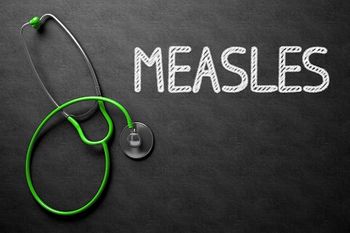
Timothy Skalland, PhD: Examining HIV Incidence and Viral Burden at the Community Level in the PopART Trial
Higher HIV incidence is associated with higher viral burden, according to results from the PopART trial presented at CROI 2020.
Higher HIV incidence is associated with higher viral burden, according to results from the HIV Prevention Trials Network 071 Population Effects of Antiretroviral Therapy to Reduce HIV Transmission (PopART) poster presented at the Annual Conference on Retroviruses and Opportunistic Infections (
A team of investigators from the United States, London, Zambia, and South Africa determined, however, that the reduction in viral burden did not explain the differential reduction of HIV incidence that was observed in the 2 trial intervention arms.
Timothy Skalland, PhD, staff scientist of biostatistics, bioinformatics & epidemiology in the Vaccine and Infectious Disease Division at Fred Hutchinson Cancer Research Center, and presenting author on the study, discussed the top takeaways with Contagion®.
Contagion®: What was the impetus for this study?
Timothy Skalland, PhD: What the PopART trial was was a 3-arm cluster randomized trial, community-randomized trial, of 21 communities in Zambia and South Africa. And what they were testing was an intervention package, a combination HIV-prevention strategy, that included universal testing and treatment in 2 of the 3 arms, and the only difference at the beginning of the trial between the 2 intervention arms was that 1 was doing immediate antiretroviral therapy (ART) upon knowing that you're HIV-positive. And 1 of the other trial arms was a delayed ART [strategy] over a certain viral load.
In the middle of the trial, though, after the first year of the trial, the country guidelines changed because we had updated data that immediate ART was the best course of action, and all of our communities, eventually over time, went to immediate ART in the middle of our trial. So that happened just because of the guidelines changed and we couldn't do that delayed [arm] anymore.
What this design was originally and still throughout, of course, was a matched-triplet design and they were matched on a bunch of different criteria, but the 2 big things for the matching were community HIV prevalence and community geography. We had these matched triplets, 3 communities each, on which to compare HIV incidence at the end of the trial.
The big takeaway from the trial itself was that we did see a reduction in HIV incidence between the intervention arms and the control arm, the standard-of-care arm, but the biggest reduction actually came in the trial arm which had that delayed ART even though in the middle of the trial we had to switch. We actually saw a reduction between the trial arms. There was a moderate reduction in HIV incidence between the trial arms. And so the motivation for this research and some future research that's coming out, is to look at factors that would contribute to why we saw a differential HIV incidence between the trial arms here. Because, essentially, we were expecting arm A, which was our immediate ART, to have the biggest reduction, but arm B, which was the delayed, actually had the biggest reduction in HIV incidence.
Contagion®: Was the research team surprised by the results?
Skalland: I think the entire trial team was surprised by those results. Now we've sort of taken on this bigger endeavor to really dive in and try to figure out why. There's been a lot of work and research going on in the last year and this is one part of that. And that is just looking at the viral burden aspects because the concept is that we wanted to, with universal testing and treatment, increase the 90-90-90 targets, we wanted to increase viral suppression, and therefore reduce viral burden, viral burden in the community being the number of HIV-positives that are not virally suppressed among everybody in the community, both HIV-positive and HIV-negative.
There was sort of 2 steps to look at initially with this research here. One was just to see if we actually had a difference in viral burden between the arms. Did we, in the trial, actually affect viral burden? And then afterwards, did any effect that we see mediate the HIV incidence results that we saw? Does it correlate to the matched HIV-incidence results that we saw? So those are the 2 main questions with this research that I was doing.
Contagion®: Any larger clinical takeaways?
Skalland: One is that HIV incidence is highly correlated with viral burden, which is not actually that surprising. Much other research has shown this.
Kind of the high-level picture here is that the mechanism that you would sort of expect to be working to reduce HIV incidence isn't reflected here. Viral burden wasn't the thing that seemed to drive the HIV incidence results that we’re seeing.
Contagion®: Are there plans for future research on this topic?
Skalland: The next steps that we're working on is to look at other community and individual level factors that would have played a result into these findings. The first thing we're going to look at is the viral burden, and we've looked at the viral suppression in this same realm. The next steps are sort of looking at other factors, whether it’s sexual risk behaviors that may differ between the communities. We want to look at things like male circumcision, other socio-demographic variables that might explain why we're seeing that arm be the difference in HIV incidence that's not really being explained by the usual what we would expect.
The poster, “HIV Incidence and Viral Burden at the Community Level in HPTN 071 (PopART),” was presented Monday, March 9, 2020 at CROI 2020.
Newsletter
Stay ahead of emerging infectious disease threats with expert insights and breaking research. Subscribe now to get updates delivered straight to your inbox.

































































































































































































































































































